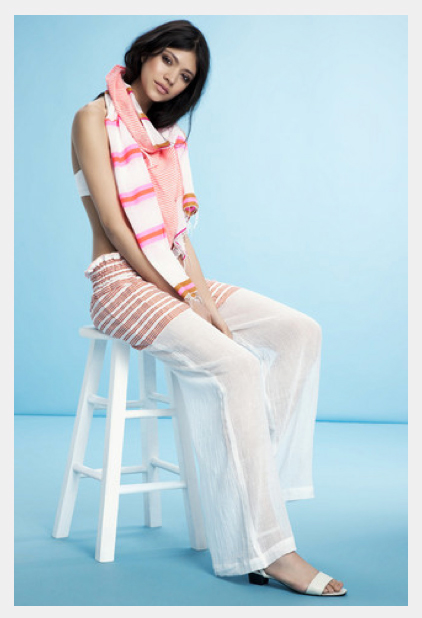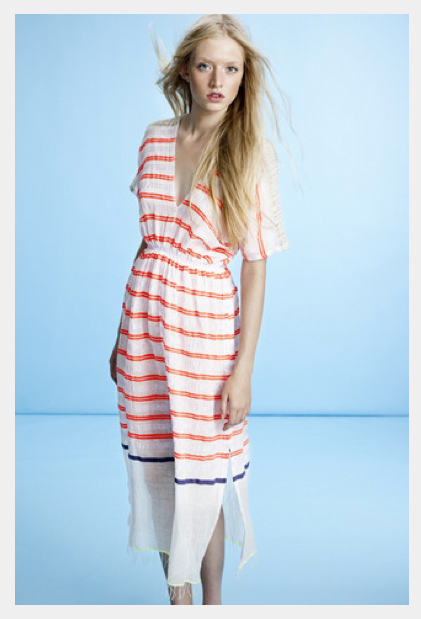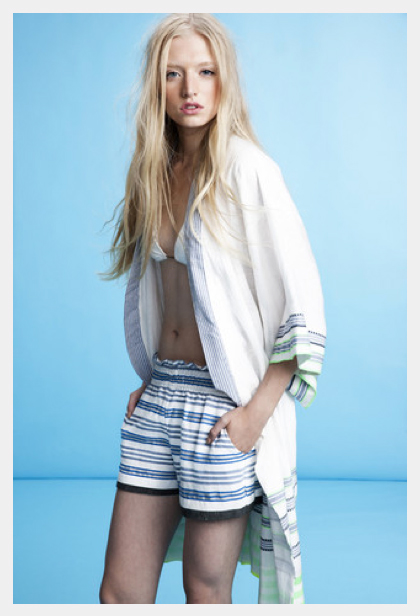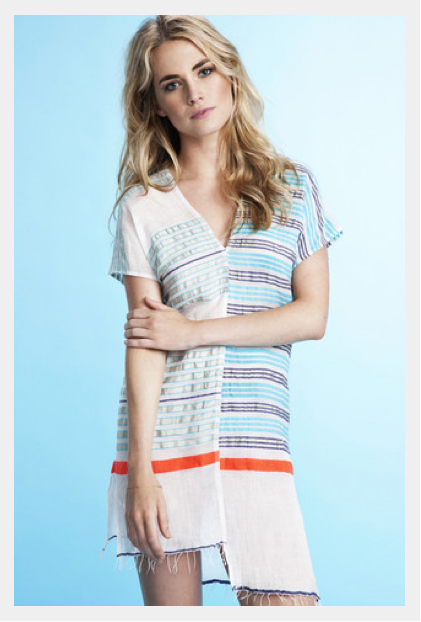
Super model, actress and philanthropist Liya Kebede who was born and raised in Addis Ababa, Ethiopia has climbed many glossy ladders to get to where she is today. And by no means has she abandoned the root of her success on the way up. As World Health Organization ambassador for Maternal, New born and Child Health, Liya is aware of the desperate help needed around the world especially in her native country of Ethiopia. Distraught by the unemployment within her country, Liya had to take a stand to defend and support local independent traders and weavers who make a difference in local communities. As well as recognizing the importance of fair trade, Liya also has an appreciation as well as the utmost respect for the art of traditional weaving, which inspired her ethical clothing brand Lemlem.





The supermodel established Lemlem in 2007 as a way to highlight the beauty and historical significance of handmade garments through the art of weaving. Lemlem, which means to flourish, in her native tongue Amharic, has lived up to its beautiful name and indeed has bloomed past Liya’s expectations. The handmade process of the garments available on the site www.lemlem.com stay true to the ancient art form of weaving using organic materials such as cotton.
Since the days of Queen of Sheba, Ethiopian people have adorned themselves using beautiful, vibrant hand woven and embroidered garments. This traditional trait can be identified through the garments seen at Lemlem. Only the dainty and the delicate can be spotted when shopping at Lemlem, which show the time and skill put into each organic item. A breath of fresh air is the best way to describe the fabric used at Lemlem, as the fresh white cotton feels just weightless at the tip of your fingers…
Featured in the likes of Vogue, Marie Claire, Elle magazine and Harpers Bazaar, it is clear that Liya is making an ethical mark with her clothing brand as well as creating a positive awareness about equal opportunities in Ethiopia and other countries, that deserve the recognition and respect.
http://www.youtube.com/watch?v=MWC3Ex9ELh8
Weaving, embroidery or any other form of fabric formation takes place in a variety of countries in Africa not only in Ethiopia. Africa itself is the leading supplier of fabrics and natural sources exploited all around the world. The art of weaving can be compared to a mothers’ love that has been passed down from generation to generation and harnesses such skill and technique. Weaving is the systematic interlacing of two elements which, when stringed through a special machine called a ‘Loom’, forms a coherent structure eventually creating the desired cloth or fabric.
The early beginnings of weaving are still not quite sure of, but history dates it as far back as 7000 to 8000 BC the era of the Mesopotamia people. Seen as a form of survival or even a technique inspired by the observation of spider webs and birds nests, in the beginning, weaving stood as an everyday need of our prehistoric ancestors providing shelter, clothing and assistance on their quest for basic needs of food. Along with basic needs of survival, our ancestors also thought to embellish their arts of work once they had mastered the art of weaving.
The idea of weaving spans across the border and no technique is too complicated for many countries of Africa. Ghana’s traditional Kente cloth is also hand woven cloth usually containing bright primary colours and has stood as a significant symbol of Ghana’s ritual culture for centuries. Kente is worn all over the world and is exported to more places around the world than any other African fabric. As well as the bright colours and intricate pattern work, Kente cloth speaks a thousands words and each pattern represents something different.
The list of woven fabrics found around Africa is endless, Aso Oke cloth worn by Nigerians is also very significant. A shortened term of Aso Ilu Oke also known as Aso-Ofi meaning clothes from the up-country, Aso Oke is the traditional cloth worn by the Yorubas (the tribe of the southwest people in Nigeria, Africa). Liya Kebede’s idea to highlight the struggle of the hard working men and women behind the woven industry is a brave act of fighting for what is right for them and their future generations to come.
The line is incredible and all the garments are made from Ethopian material, so we all know our money will go to an amazing cause. The price is so worth the effort and your pocket, so if it means saving life whist you shop; be beautiful, buy ethical and give with love.
Author – Dannike Walters
Re-posted from: www.africafashionguide.com
